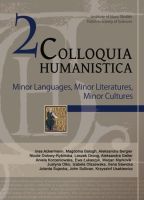What Is Yiddishism? Debates on Modern Yiddish Culture in the Interwar Weekly Literarishe Bleter
What Is Yiddishism? Debates on Modern Yiddish Culture in the Interwar Weekly Literarishe Bleter
Author(s): Aleksandra GellerSubject(s): Cultural Essay, Political Essay, Societal Essay
Published by: Instytut Slawistyki Polskiej Akademii Nauk
Keywords: Yiddishism; Yiddish culture; Yiddishland; Yiddish press; interwar Poland; Literarishe Bleter; Nakhmen Mayzil; Avrom Golomb
Summary/Abstract: Modern secular Yiddish culture reached the peak of its development during the 1920ies and Poland was at that time one of the main centres where Yiddish literature, theatre, press, scholarship and schools flourished. This paper outlines the basic principles of Yiddishism, a Diaspora-based national movement that saw language and culture as the cornerstones of a secular Jewish identity. It also presents some of the major theoretical questions faced by its supporters. What were the goals of Yiddishism? How Jewish should Yiddish culture be? Should it simply be a culture in Yiddish or should it incorporate elements of the Jewish religious heritage? If so, which ones? Who exactly were the so-called “Jewish masses” so often referred to as the target readership/audience of the modern Yiddish cultural project? How could the challenges of geographical dispersion be overcome? The arguments presented in this paper are based mostly on material found in the weekly Literarishe Bleter , where these and other questions surfaced time and again. Founded in Warsaw in 1924 by a group of Yiddish writers, it was the longest lasting and probably the most influential Yiddish literary journal of the its time. Throughout the interwar period it was a place where all supporters of the Yiddish language movement crossed intellectual paths, either as collaborators or adversaries. Today, Literarishe Bleter enable its modern reader to see the complexity of what it meant to strive towards cultural autonomy in interwar Poland.
Journal: Colloquia Humanistica
- Issue Year: 2013
- Issue No: 2
- Page Range: 59-78
- Page Count: 20
- Language: English

